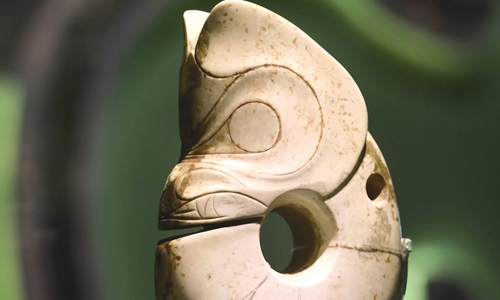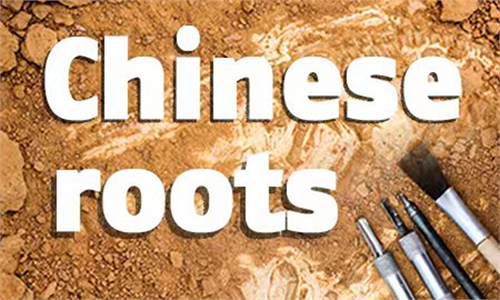
A dragon-shaped jade carving unearthed from the Niuheliang Ruins Photo: IC
Hongshan Culture: earliest civilization found in Northeast ChinaIn autumn 1983, deep inside the rolling hills of Northeast China's Liaoning Province archaeologists were unearthing a clay sculpture at the Niuheliang Ruins excavation site, the center of the Hongshan Culture.
The Hongshan Culture, existing around 5,000 to 6,000 years ago, is one of the earliest cultures that existed in Northeast China.
As the dirt on the sculpture was brushed off, a human-size head of a woman was revealed to everyone.
As more soil layers were excavated at the site, the ruins of a temple were revealed. The female figure was located in the western section of the temple. Based on the clay sculpture, the archaeologists named this location atop the mountain the "Goddess Temple." Experts speculated that this was most likely a temple used to make sacrifices at the time.
Archaeologists at the site also discovered a piece of jade shaped like an animal head with notches in it lying on the chest of the tomb owner.
Experts later determined that the Hongshan Culture used jade as ritual implements and that this had an influence on the later Shang (C.1600-1046BC) and Western Zhou (1046BC-771BC) dynasties.
Long before the Niuheliang Ruins were discovered, the first traces of what would become known as the Hongshan Culture were identified in 1921 on Hongshan Mountain in Chifeng, North China's Inner Mongolia Autonomous Region.
In 1954, well-known archaeologist Yin Da gave the culture the name Hongshan, after the area where it was first discovered.
Archeological sites related to the Hongshan Culture extend from Northeast China's Liaoning Province to the Inner Mongolia Autonomous Region.
In 2019, a total of 78 graves, one altar, 29 sacrificial sites and relics including over 140 jade items were unearthed at Banlashan Mountain in Chaoyang, Liaoning Province.
The culture is known for its unearthed jade artifacts, most of which were carved into animals such as bears, pigs and fish.
Among them, the most standout figure was of a Chinese dragon. It was one of the oldest Chinese dragon figures ever discovered.
Global Times

